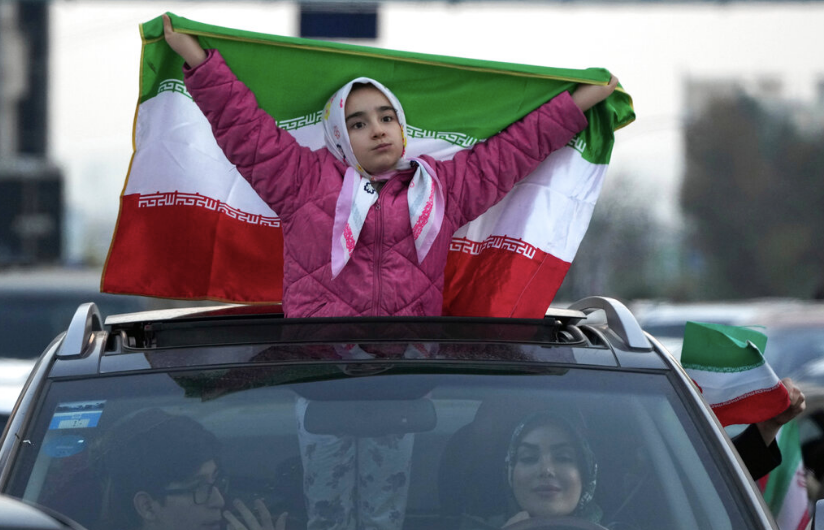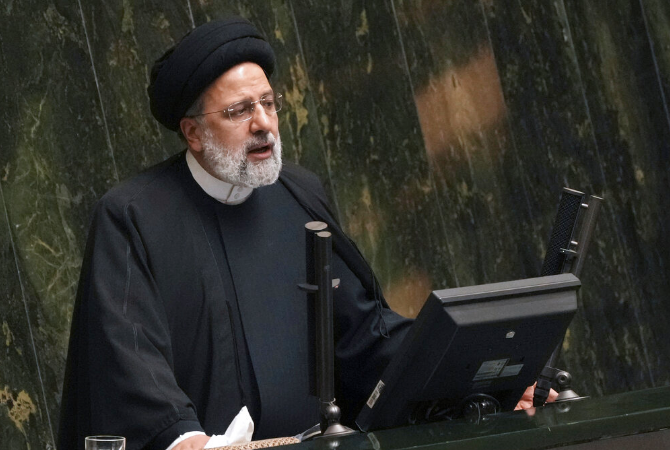Iranian Protests Reignite as Hundreds of Schoolgirls are Hospitalized for Gas Poisoning
A young girl proudly displays the Iranian flag. Women and girls have been at the center of recent protests in Iran since last fall and continue to fall victim to terrorism. Photo: AP Photo/Vahid Salemi
Tensions in Iran have skyrocketed after public outrage over the poisonings of several schoolgirls was revealed this weekend. Since early Nov., female students across the nation reported smelling strange scents in their schools, quickly followed by widespread health declines. Symptoms included difficulty breathing, irregular heart palpitations, nausea, and muscle problems, and most ended up in the hospital. As of Mar. 6, upwards of 1000 women and girls have been hospitalized and treated for what has been diagnosed as nitrogen gas poisoning. Still, these cases were largely overlooked in the beginning, particularly in the wake of the Mahsa Amini Protests. It was not until recently, as numbers rapidly grew to several hundred, that attention was given to the potential poisonings.
In response, the Iranian prosecutor general opened an investigation into the poisonings. The current theory is that these poisonings were an act of state terrorism, perpetuated by religious extremists that are trying to discourage women and girls from going to schools. While this extremist behavior has been observed around the world, particularly in Iran’s neighbor, Afghanistan, there are few reports of such terrorism within Iran. Still, Deputy Health Minister Younes Panahi has said that it is "evident that some people wanted all schools... to be closed down.”.
Parents have responded immediately, with many pulling their students out of classes. Protesters have taken to the streets once again to speak out against the Ayatollah and his government, whom many citizens believe have been too inactive in protecting their girls. One father demanded that the government “ensure [his] children’s safety!” One mother pleaded, "Dear mothers, I'm a mother and my child is in a hospital bed and her limbs are weak… please don't send your children to school." Doctors and teachers alike are speaking out to the fullest extent possible under Iran’s restrictive regime, which has already utilized tear gas on rioters and private call monitoring on healthcare workers and the families of the victims.
Iranian President Ebrahim Raisi delivers an address to lawmakers, later condemning the terrorist actions that have led to upwards of 1000 women and girls becoming hospitalized. Photo: AP/Vahid Salemi
Despite the attacks on those speaking against the government, Ayatollah Khamenei and other members of his government have openly expressed support for the girls and condemnation of the instigators. On state TV, the Ayatollah called out the terrorists, saying, “The poisonings are a grave and unforgivable crime… those perpetrators of this unforgivable crime should be sentenced to capital punishment.” Judiciary Chief Gholamhossein Mohseni Ejei likewise warned that they could face the charge of "corruption on earth", which is punishable by death. Iranian President Ebrahim Raisi urged lawmakers to devote their efforts toward finding the perpetrators for the sake of the entire nation.
Although these poisonings were largely overlooked in the early stages, they are intricately aligned with the original Mahsa Amini protests and have directly led to the revitalization of protests in Iran. Previously uninvolved Iranian schoolgirls are now leaving the classroom and hitting the streets to join the efforts. The tragedies themselves add fuel for those who have already been protesting against the Iranian government. Because the original protests were centered around the rights of women and girls, there are alternative motive theories that the poisonings are retaliation for protesting headscarves last fall. If anything, this has been all the more reason for the victims, families, and supporters of women’s rights in Iran to continue protesting.


